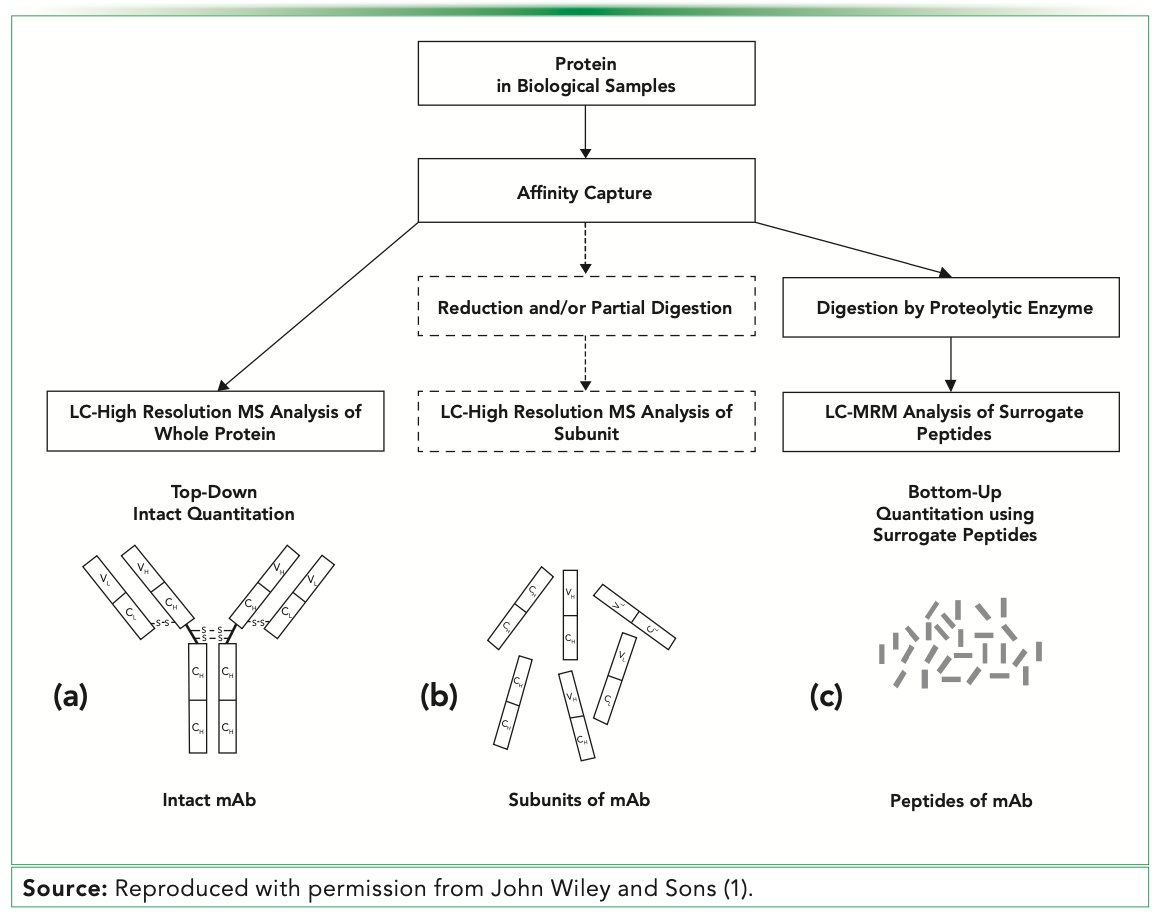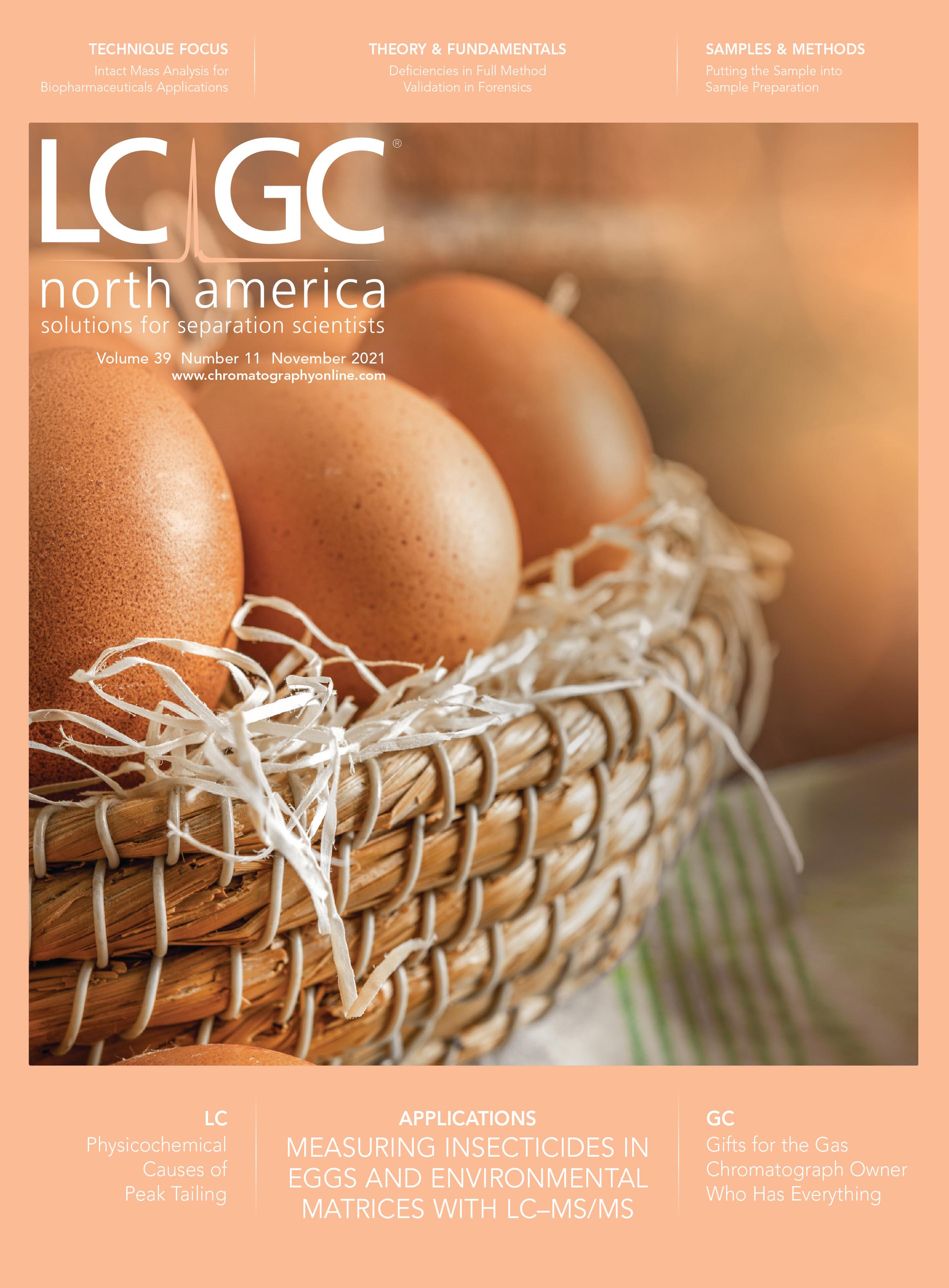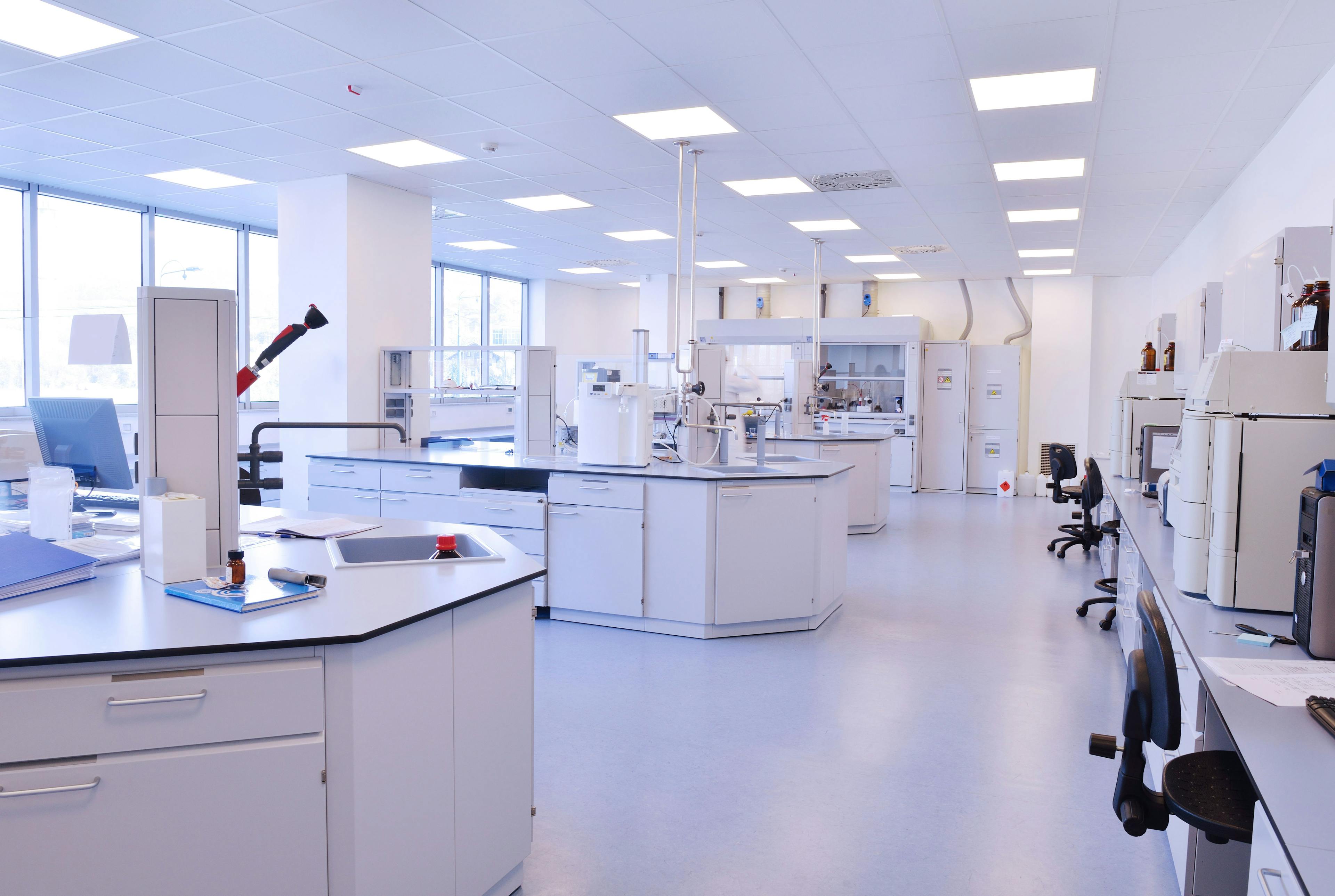Intact Mass Analysis of Biopharmaceuticals as its Own Unique Application
With the number of complex biologics, such as antibody–drug conjugates (ADCs), increasing, reliable, reproducible, and rapid methods are needed for their bioanalytical characterization. Arguably, the most common analytical technologies currently used for characterizing biologics are liquid chromatography (LC) and mass spectrometry (MS) focused on liquid chromatography–tandem mass spectrometry (LC–MS/MS) peptide applications. Just as important is the application of LC–MS to analyze the intact mass of these products. In this column, we explore the most current applications of intact mass analysis, such as quantitation, sequencing, and structural characterizing. The advantages and disadvantages of intact mass analysis are discussed, and a short discussion of how peptide characterization is an orthogonal application to intact characterization is presented. The difference between top-down MS and intact mass analysis is explored, because the two terms are often mistakenly used interchangeably. Finally, intact multi-attribute methods (MAMs) are discussed as well as an unique intact mass approach in characterizing ADCs.
Characterization of biopharmaceuticals is important throughout the life cycle of the drug product to ensure the safety, efficacy, and quality of the product. This characterizing is particularly important for biologics because they are produced in living organisms and cells, which introduces variability into the product. Not one technology or technique can provide all the evidence necessary to characterize any given product. As a matter of fact, the phrase “totality of the evidence” is used to describe the diverse data needed to prove the safety, efficacy, and quality of a product.
One of the most used techniques to characterize a biologic is liquid chromatography (LC) and mass spectrometry (MS). The most common MS technique used is liquid chromatography tandem mass spectrometry (LC–MS/MS), which is your traditional bottom-up MS experiment where molecules, such as proteins, are digested with an enzyme, commonly trypsin, and then analyzed using LC–MS/MS at the peptide level (Figure 1c) (1). Typical information gained from this type of experiment is sequence coverage and post-translational modification location (1).
FIGURE 1: Illustration of top-down, middle-down, and bottom-up mass spectrometry.

Alternative to bottom-up analysis is top-down analysis. In top-down analysis, molecules and proteins are injected into the MS instrument without prior digestion and often bypasses the use of the liquid chromatographer. As illustrated in Figure 1a, the intact molecule is fragmented inside the MS instrument in a variety of different ways, such as funnel skimmer dissociation (FSD), electron capture dissociation (ECD), and electron transfer dissociation (ETD) (1).
In addition to bottom-up and top-down approaches, there are middle-down approaches worth mentioning. In middle-down approaches, the molecule is digested in a limited fashion or broken down in a controlled manner. In the case of antibody biopharmaceuticals, they often break down the disulfide bonds and leave the heavy and light chains separate, which allows for easier analysis. Middle-down approaches are a valuable tool when using true intact mass analysis because the light chain is often not modified, and the heavy chain is modified with terminal lysines or glycans, as shown in Figure 1b (1).
Here, we discuss intact mass analysis of biopharmaceuticals as its own unique technique. Often, individuals will use top-down and intact mass analysis interchangeably, when, in fact, they are two different things. Simply put, top-down analysis includes fragmentation of the intact molecule, whereas intact mass analysis does not. Let us consider some of the areas that intact mass analysis can add value in biopharmaceutical analysis: sample preparation, quantitation, sequence, structural characterization, intact multi-attribute methods (intactMAMs), and approaches to more complex molecules like antibody–drug conjugates (ADCs).
Sample Preparation
One of the most important things to consider with any MS experiment is sample preparation because garbage in means garbage out. This saying is especially true in regards to intact mass analysis. Not every protein will be amenable to intact mass analysis, although most antibodies are. For example, many proteins aggregate in the presence of acetonitrile or formic acid, which makes them not amenable to intact mass analysis. Often, samples are sprayed directly into the MS instrument using high performance liquid chromatography (HPLC) grade water or ammonium acetate, meaning the sample of interest must be stable in those (or another) solvents to be amenable to intact mass analysis.
There are many ways to prepare your sample for intact protein analysis. Let us consider just two of them as examples. The easiest sample preparation process is to simply dilute the sample in the solvent to be used in the MS experiment. Diluting the sample oftentimes reduces other competing elements out of the signal. Another popular sample preparation approach involves buffer exchange, where the protein sample is added to a buffer exchange centrifuge device with ammonium bicarbonate, which competes off many sodium adducts and then subsequently with the spraying solvent usually either HPLC grade water or ammonium acetate (2). In thinking about sample preparation for intact proteins, remember that small molecule sample preparation techniques cannot be applied to large molecules.
One of the biggest advantages for intact mass analysis is that it needs minimal sample preparation. The more a sample is manipulated or processed, the more likely artificial modifications and changes can occur on the molecule. There have been numerous examples in the literature of sample preparation involved in bottom-up analysis that have caused disulfide scrambling, added exogenous modifications, such as oxidation, and even deamidation (3,4). The less a sample is handled, the less chance there is for artifacts being introduced from sample preparation.
Quantitation
Historically, protein quantification has been done on peptides from a bottom-up analysis. However, over the last several years, the sensitivity of current MS instruments has improved and now can quantify large proteins from their intact mass spectra. Previously, quantification of intact proteins had been limited to molecules that could be resolved isotopically, generally below 25 kDa in mass. That is because the extracted ion chromatograms of individual isotopes of a given charge state were used for quantification (1). In more recent years, absolute quantification has been shown for intact monoclonal antibodies (mAbs) using deconvoluted intact mass spectra to be equivalent to isotopic quantification (1,5). Thus, high resolution intact mass spectra can be used in the quantification of the molecule either using specific isotopic peaks of a given charge or by using a deconvoluted peak (1).
Structural Characterization
In this case, we are not elucidating the three-dimensional structure of the molecule, but instead leveraging the intact mass spectrometry data to gain some general insights into the structural aspects of the molecule. For the sake of argument, post-translational modifications, such as glycosylation, are considered structural elements.
Intact mass analysis is useful and important in this aspect because it gives you a global view of the protein or molecule. In other words, intact mass analysis provides insight into the heterogeneity of not only the molecule, but the sample itself (what is inside the tube). When considering biotherapeutics, it is important to understand intact mass analysis because there are no proteins or drug products that are homogenous.
The charge distribution, or the charge state envelope, also provides some insight into the molecule. Comparing the charge state distribution of the same protein or biologic across batches may imply a change in structure if the distribution changes as low charge states are generally indicative of a more compact molecule, whereas molecules with larger charge states are less compact. In addition, using soft ionization mass spectrometry conditions can allow some structural elements of a protein, such as oligomerization, to remain intact and to be detected in an intact mass spectrometry experiment.
The distribution observed in an intact mass analysis is particularly important when monitoring ADCs. Briefly, an ADC is an antibody armed with a chemical warhead that is meant to act as the active pharmaceutical ingredient. The antibody gives specificity to deliver the chemical warhead to the specific location where a cell may be lysed, for example. In observing the intact mass of an ADC, the distribution will provide information as to how many drugs are conjugated to a given antibody and if the antibody is conjugated (1). As a matter of fact, this same principle can be applied to monitoring glycosylation.
Lastly, intact mass analysis can be used to monitor degradation products or aggregation. For example, in the case of mAbs, dissociation of the heavy chain and light chain can be monitored, which is indicative of degradation of the antibody assuming, or course, no chemicals were added to induce that dissociation. Also, if the biologic is being truncated at the N- or C-termini the intact mass observed will be less than that of the expected mass, thus suggestion potential degradation. Along with degradation, intact mass analysis can give insight into the oligomeric state of a molecule. If the mass is larger than expected, then it can be assumed that molecule is aggregating. Often for biologics, the aggregation pathway is through oligomerization, such as dimer, trimer, and tetramer, and then to larger aggregates (fibrils) (6).
Intact Multi-Attribute Methods (Intact-MAMs)
In a previous column, we discussed MAMs (7). However, we did not at that time discuss intact-MAMs. Briefly, MAMs have most commonly been applied in a bottom-up type approach, where specific critical quality attributes of a biologic are monitored. In this example, sequence coverage and post-translational modifications are monitored in one aspect and new peak detection is used in another. Thus, both make up traditional MAMs (7). Based on the discussion of intact protein analysis above, intact-MAMs, can be defined as MAMs in which the intact biologic or in some cases intact subunits are analyzed. The focus of intact-MAMs is monitoring specific post-translational modifications in the biologic, monoclonal antibody, such as glycosylation. One of the more exciting applications of intact-MAMs is in the quality control space, including at some point perhaps inline intact-MAMs monitoring. In a recent paper by Lanter and others (8), the authors describe a workflow where sample is pulled directly from the bioreactor, centrifuged to remove cell debris, reduced and the heavy and light chain can be monitored for modifications. In addition, the authors showed they could monitor glycosylation of the heavy and light chain of the antibody using this method (8).
Another important use for Intact-MAMs is with ADCs. In traditional MAMs, where the protein is digested, the drug distribution profile of the ADC is lost, thus intact-MAMs provides some added benefit. Specifically, Intact-MAMs for ADCs allows for product identity confirmation, quantification of the different conjugated species, and to monitor drug-to-antibody ratio (9). Interestingly, in both examples new peak detection is not part of the Intact-MAMs workflow, so perhaps it is not truly Intact-MAMs until that is included, but instead just normal intact mass analysis?
Data Analysis
An important aspect of intact mass analysis to consider is data analysis and the actual information gathered from the analysis. In an intact mass analysis, you can obtain the exact mass of the molecule that can be compared to a theoretical mass of the molecule or the molecule itself as a reference standard. However, only a mass can be obtained, and no sequence data can be obtained. For comparison of a molecule between lots or batches this does not cause a problem, or if you wanted to compare an innovator drug to a biosimilar that too is doable. However, you are not able to identify a protein based on sequencing but instead only on the mass obtained.
In addition, post-translational modifications are only obtained on the global level and are not able to be localized to any given amino acid. The advantage here is you know how many modifications you have per molecule, but not much else. As an example, in a bottom-up experiment the data suggested that all cysteines present were involved in disulfide bonds, however the intact mass of the molecule confirmed that there was only one disulfide bond. Thus, we observed scrambling of disulfides in the peptide mapping experiment (10). Thus, as with any experiment, it is good to understand what information can be gathered, what the limitations are, and how to address limitations with orthogonal techniques.
Conclusion
Intact mass analysis, an orthogonal approach to peptide mapping, is an important analytical technique to characterize biologics in its own right. Many analytical workflows for biologics start with an intact mass analysis first, followed by an intact mass analysis of the reduced antibody, followed by peptide mapping and finally released glycan analysis. The reduction in sample preparation and analysis time may be valuable in real-time analysis of drug products as well as reducing or eliminating any artifacts of analysis that may occur. Intact mass analysis gives a global view of the heterogeneity of biological drug substance and drug product and provides an opportunity to quantitate those molecules and conjugates. Intact mass analysis is especially important for more complex molecule characterization such as for ADCs.
Thus, intact mass analysis is another tool in our analytical toolbox to ensure safe, effective, and quality biopharmaceutical products.
References
(1) L. Kang, N. Weng, and W. Jian, Biomed. Chromatogr. 34(1), e4633 (2020).
(2) D.P. Donnelly, C.M. Rawlins, C.J. DeHart, L. Fornelli, L.F. Schachner, Z. Lin, J.L. Lippens, et al., Nat. Methods 16(7), 587–594 (2019).
(3) J.R. Auclair, J.P. Salisbury, J.L. Johnson, G.A. Petsko, D. Ringe, D.A. Bosco, et al., Proteomics 14(10), 1152–1157 (2014).
(4) S. Liu, K.R. Moulton, J.R. Auclair, and Z.S. Zhou, Amino Acids 48(4), 1059–1067 (2016).
(5) W. Jian, L. Kang, L. Burton, and N. Weng, Bioanalysis 8(16), 1679–1991 (2016).
(6) A.C. Gucinski and M.T. Boyne II, Anal. Chem. 84(18), 8045–8051 (2012).
(7) J. Auclair and A.S. Rathore, LCGC N. Am. 39(1), 28–32 (2021).
(8) C. Lanter, M. Lev, L. Cao, and V. Loladze, J. Biotechnol. 314-315, 63–70 (2020).
(9) A. Martelet, V. Garrigue, Z. Zhang, B. Genet, and A. Guttman, J. Pharm. Biomed. Anal. 201, 114094 (2021).
(10) J.R. Auclair, J.L. Johnson, Q. Liu, J.P. Salisbury, M.S. Rotunno, G.A. Petsko, et al., Biochemistry 52(36), 6137–6144 (2013).
About the Column Editors
Jared Auclair is an Associate Dean of Professional Programs and Graduate Affairs at the College of Science at Northeastern University, in Boston, Massachusetts. He is also the Director of Biotechnology and Informatics, as well as the Director of the Biopharmaceutical Analysis Training Laboratory.

Anurag S. Rathore is a professor in the Department of Chemical Engineering at the Indian Institute of Technology in Delhi, India.


University of Rouen-Normandy Scientists Explore Eco-Friendly Sampling Approach for GC-HRMS
April 17th 2025Root exudates—substances secreted by living plant roots—are challenging to sample, as they are typically extracted using artificial devices and can vary widely in both quantity and composition across plant species.
Common Challenges in Nitrosamine Analysis: An LCGC International Peer Exchange
April 15th 2025A recent roundtable discussion featuring Aloka Srinivasan of Raaha, Mayank Bhanti of the United States Pharmacopeia (USP), and Amber Burch of Purisys discussed the challenges surrounding nitrosamine analysis in pharmaceuticals.












